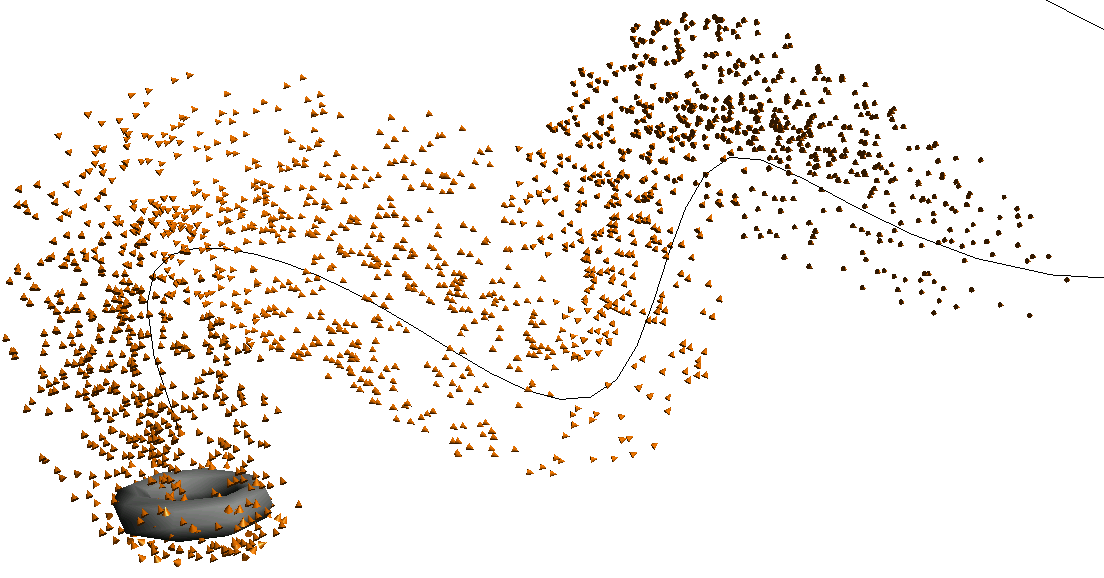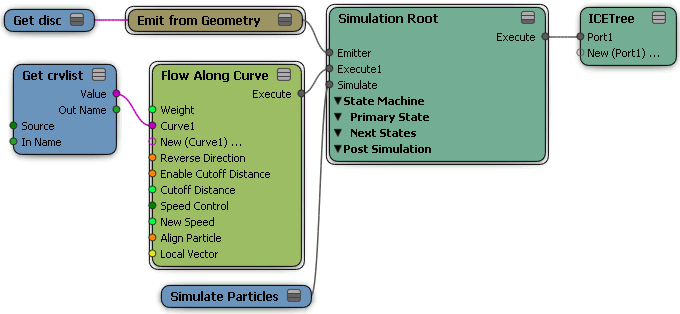You can make particles flow along a curve using the appropriately-named Flow Along Curve compound. This compound modifies the velocity vector so that the particles follow along a curve's tangent. This is useful for when you need particles to follow a path or direction, such as a school of fish swimming and turning suddenly, blood cells flowing through arteries, or lava oozing in streams down a mountain.

To make particles flow along a curve
Create one or more curves along which the particles will move.
You can animate the curve's transformations and deformations as you like and the particles will continue to follow it.
Create a particle emission — see Creating a Basic Particle Emission.
Choose Particles  Collision
Collision  Flow Along Curve from the ICE toolbar.
Flow Along Curve from the ICE toolbar.
This command adds the Flow Along Curve compound to the ICE tree, plugging it into the Execute port of the Simulation Root compound.
Pick one or more curves to use for the particle flow. Each curve's Get data node is then plugged into the Curve port of the Flow Along Curve compound.

In the Flow Along Curve property editor, set the parameters as you like to affect how the particles flow along the curves. This affects the interaction of the particles with all curves that are plugged into this compound.

Particle's Y axis aligns in the direction of the curve when you select the Align Particle and Local Vector options.